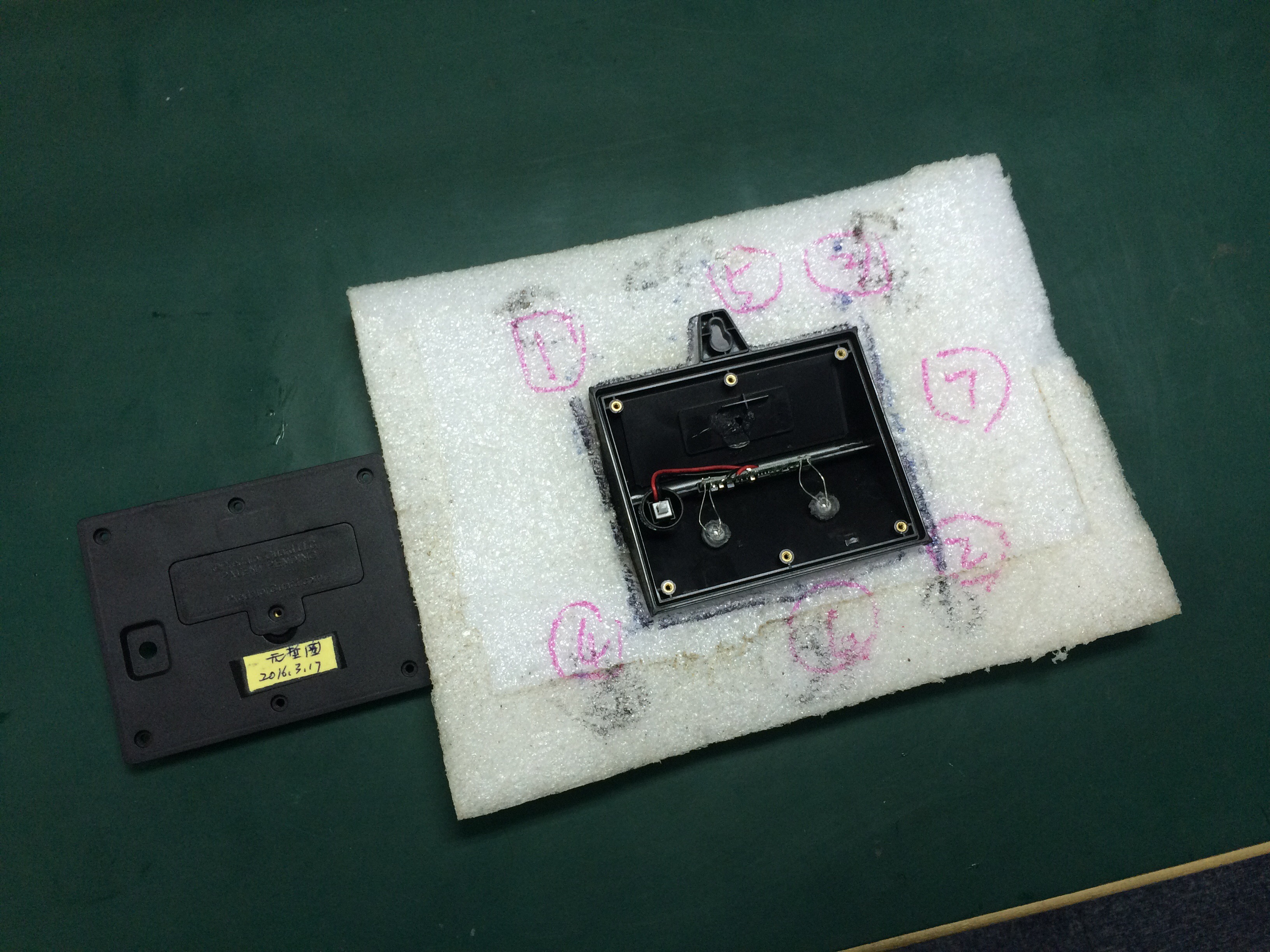
Over the years, I have visited plenty of factories and manufacturers in China and Asia. I have been auditing myself in Korea, Cambodia, Taiwan, Thailand etc… I have seen big factory working terribly with high inefficiency and ready to collapse because being unorganized, but I have also seen some tiny manufacturers very well organized, ultra efficient and ready to grow quickly. Strangely, the best suppliers I have seen are quite often the smallest one (but not necessarily the one who have the smallest turn over and profitability).
I saw several factories closing door in the last years very quickly. Still, their managers, and owners where driving very big car and the working conditions in their factories were terrible for their employees.
As the company I am working currently with got a mini production and assembly line in-house, I have also been in touch with direct management of production and workers. I also managed with local engineers. I remember when we started production a few years ago, my Chinese colleagues had hard time to manage our workers. I remember them almost crying telling me the workers where constantly doing some mistake. We deliver our customers with 100% quality control (I estimate we even sometimes make what is called “Over quality”).
If you have read my other blog articles, you probably know I am an adept of quality control, productivity, and efficiency (not only in manufacturing activity, but in almost everything we do). This is the essence of lean principle which I am also a fan of (mostly inspired from the Toyota Production System). Fan of those technics, very shortly after getting educated about it, I decided to implement some basic concept and tools to our production line and I have to say that it brought many benefits. I will write several articles because the topic can be long.
On this article I will start with mistake proofing and poka yoke, which is my favorite Lean tools because the one which require the most creativity. And for me, this is also the funniest part.
I am going to tell you a few of my secrets about how you can improve reliability and quality of your production in China with almost no cost. I have established a list of a principle who are the basic of how we drive our workers to make proper production. Read below if you are interested:
Assume your workers are human robot who got no AI software in their “chipset”, so they necessarily need you provide them with a good embedded software and framework
I know it may sounds hard to hear and it may even shock you, but believe me if you want to organize some production line with workers in China you need to put yourself in some conditions to understand how those people are thinking to be able to anticipate their next move. Otherwise you will have very high difficulties to anticipate all the b******t they can do without even knowing they are doing some crap.
Indeed, as my Chinese colleagues says about the production line workers: “They don’t care what they are doing really, they just come for a salary and go back home at night” ” They don’t even understand what they are really doing”.
I don’t fully agree with this as I have seen some workers working on some production line doing their job with responsibilities (particularly on QC positions). However, I have to admit that in terms of percentage, a good parts of workers really don’t care about the output of their work.
It is hard to hear and totally the opposite of what Lean principles are claiming where you are supposed to make your workers to embrace their work and make them the understand their responsibility. Leadership is not always easy but it is a capability you have to build otherwise you can never be a manager here.
If their “chipset” has no AI, it means they need to learn and you need to upload them a firmware which tell them how to work properly. In the case of worker, who act like human robot, this firmware is composed of two things:
-
Clear and visual instructions about what they have to do
This can be done by having a documentation in place, most of time called Standard Operating Procedure (SOP). Be careful , I quite often see some instructions like this in the image below placed too far away from the worker position.
It is nice to have this document, but left alone far away from the worker seat position it can also be totally inefficient because nobody read them apart the one who write them.
Don’t believe the worker will stand up to read it: it is written in black and white most of time, in small character, a bit difficult to digest. You will see many of those documents in many Chinese factories. I call it “wall paper procedure” because in many factories it just decorate the working area…

What I like to do when I audit a supplier is this: I go on the line, I pick the documents, I hide it behind my back and I ask to the production manager and to the worker on the station: “How many steps are written on the documents to process ? How many pictures are there on the documents? What the pictures are showing? ” . Quite often, the answers are not clear when they are just not existent. Does this mean, the understanding of the task is as well unclear and inexistent ? Ask yourself…
Who’s fault is it ? The worker ? No. He is not the one who made the document. The fault is to the one who made the documentation who didn’t have the mindset to think at level of a worker.
A documentation should be simple, understandable by any one, accessible to anyone and straight forward. How many times I saw documentation completely inaccessible to people in companies… the typical company operation manual or quality manual hidden in a closet in the manager office….
What I usually do is to add to this wall paper procedure another SOP only for the worker which I call the “IKEA Operating Procedure”. It is an ultra simplified document for a worker to understand it even if they don’t know how to read (yes there are some workers who don’t even know how to read sometimes ahah) and it is placed at roughly the same level than their eyes slightly on the side (so they can still perform their work but ideally I like to place it in front of their eye). It looks like this:
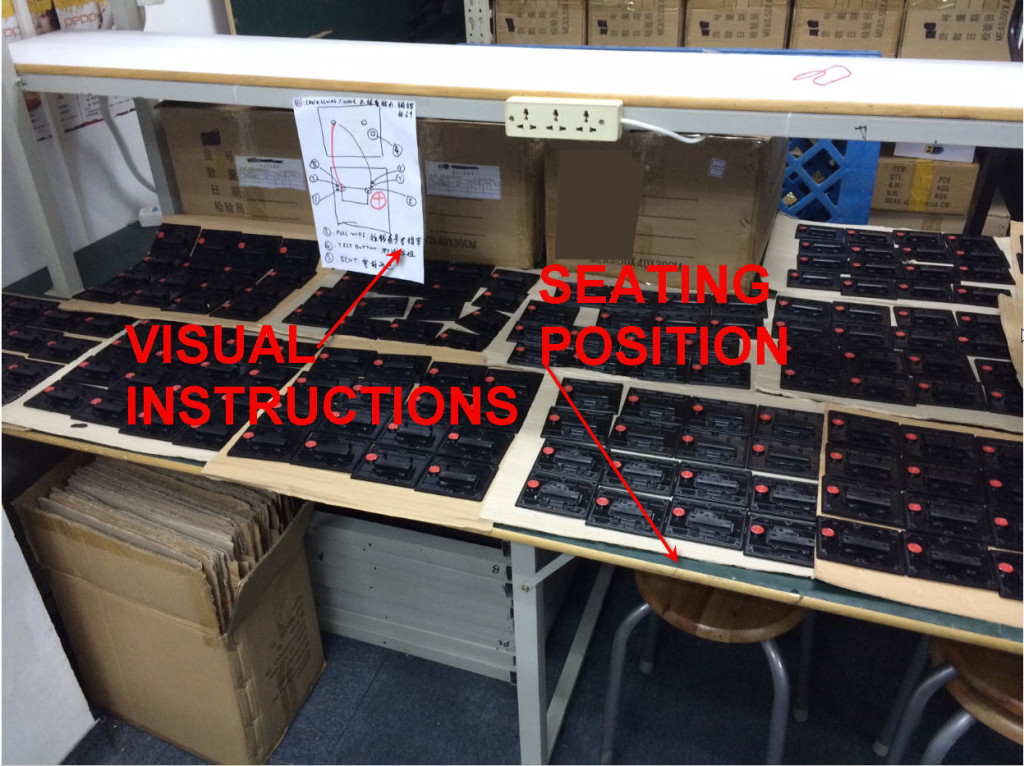
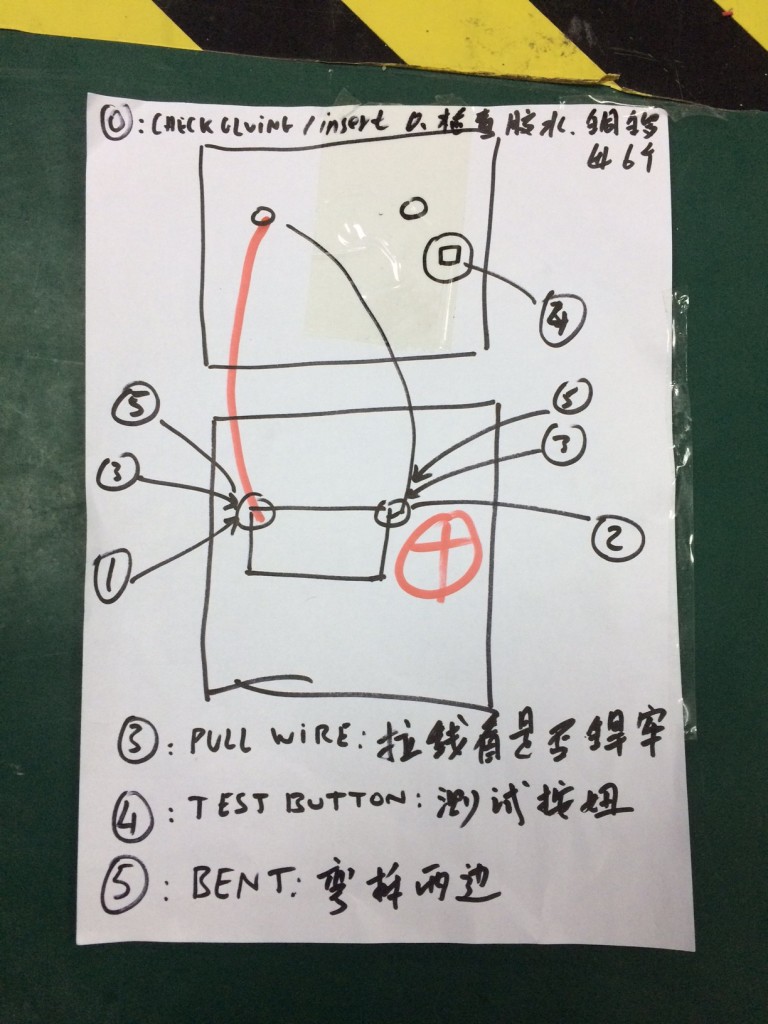
You might wonder “where are the 1 and 2”. Well actually they are on another document bis (the paper was too small, we preferred to use one more paper with big readable character rather then save some sheet of paper but having a document useless)
-
Simple training about how they have to do it
It means you need to prepare some training material to make they can rely on it before starting. In another blog post, I will talk about human ressources volatility in China and why a training program is absolutely necessary in China.
The challenge here is to find the right support/channel to transmit your training to them. In another post in the future I will explain how I train our workers.
You should never hire anyone in China without having prepared a solid training plan first. Prepare and frame your training documentation before hiring anyone. Don’t assume they will learn by themselves. Most of them don’t. (I will also describe in another post my experience with local engineer, you will laugh may be or cry…)
If you understand this, you also understand that to avoid mistakes, you need to implement mistake proofing because they may not correct mistake by themselves.
Prevent mistake with mistake proofing
Prevent mistake may sounds complicated because it is difficult to anticipate all the problems that may happened. I personally don’t think it is so complicated to prevent mistake on production line if you are properly minded and if you have a minimum of common sense.
You want your worker to work well ? Then first, you need to be on site to understand them and their problems. You need to go around the line and look at how workers are doing their job, how they manually perform, what problem they experience during their task. In Lean Manufacturing it is called “Gemba Walk“, literally in Japanese it means that you go on the crime scene to understand the problems.
I don’t know if you find out like me, but in China, the people who take your order (let’s say the sales people at a manufacturer), they usually spend very few times to monitor the production of their client. Most of the time they remain in their office on email and Alibaba to try to catch some clients. Doubt on this? Go with the sales to the production line and ask them anything about the process or any machine which is used for example: ” What this testing machine is used for ? What is the sampling size for QC on this part of the production ? How many pieces per hour this worker can do ?”. Then listen for answer. Quite often, it goes like this “Wait, I need to ask an engineer. Wait I need to ask the worker”, huh ? In the past, I had suffered this kind of people who never went to check my production before the final inspection, they just preferred to stay below the air con, they feel more like a white collar I suppose.
You need to be interested about what worker do and you need to suffer what they suffer and understand how you can make their labor task to be less laborious if you want to optimize the production flow. You need to see what problem they experience because they will not tell you by themselves. Your job is to make everything easy for them and less painful.
Going to Gemba allow you to see what mistake they do, what make them doing slow operations. What I usually do is to stay in front of each workstation for several minutes to try to identify how the worker could do better, faster and with less mistake.
Below is a very simple example of how I removed a risk of a worker soldering two wire to the wrong connector using a very simple Poka Yoke (Poka Yoke in Japanese mean mistake proofing). As the part could be positioned in wrong position the worker would solder the wire to the wrong pin (being inverted). To avoid this, I have just drawn and placed a red dot on the jig at the place where a red button should be positioned. So that, to make sure the right wires are placed in front of the right pin, and I of course make them have a IKEA Work Procedure just in front of them so they could not miss the target.(Please note I have photoshop a bit the jig in white as there were some confidential information on it:) )
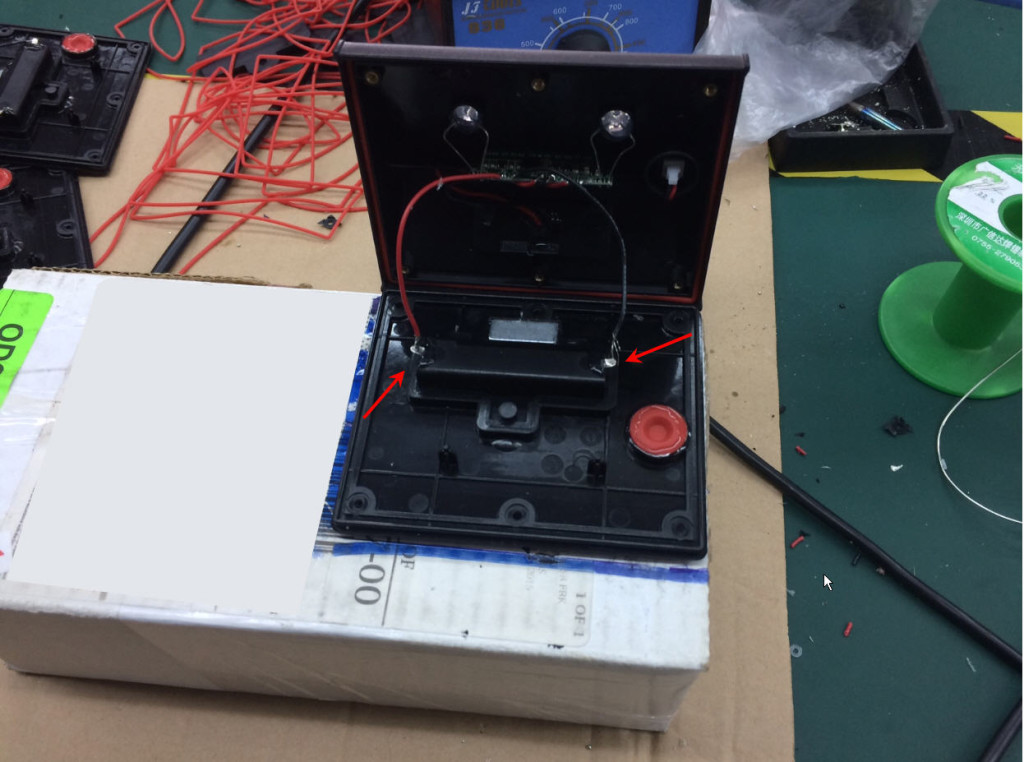
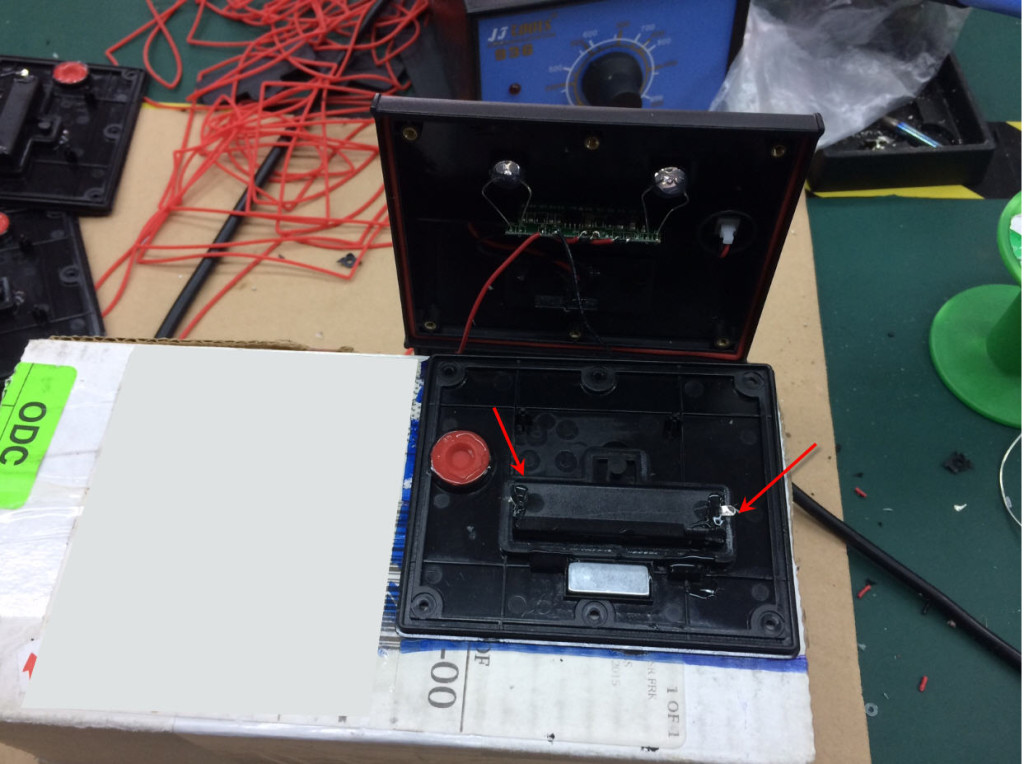
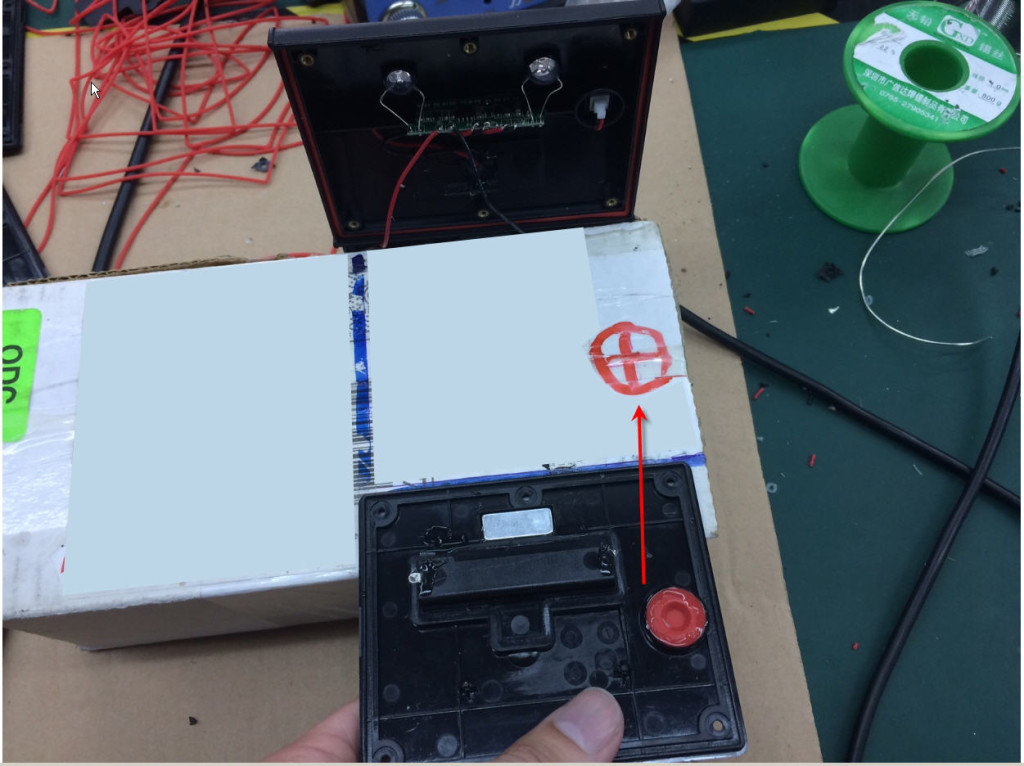
Here are is another cheap type of Poka Yoke I created in few minutes to avoid other mistakes related to pin insertion for battery (there is one flat part and one spring part and it should not be inverted: the spring go on the right and the flat part on the left, however as the parts have similar shape due to the use of standard part available on the market, they can be inserted in respective slot of the other part). To avoid this mistake, I just drawn on the carton the part and separated the carton bottom part in two parts to separate the spring and the flat part. So the worker has to position the two parts (spring and flat pin in the proper are of the carton first), then he has to position the main plastic part as indicated on the carton.
First, the simple drawing helps visually the worker to take the parts in the proper position, second the area created on the carton to “store locally” the other part help him to organize his space properly and not to mix everything. You can see the right carton part, I have drawn a spring like shape, the left part, I have drawn a flat part shape. With this, they can not get it wrong.
They have to assembly some parts who are symmetric and can bring them to invert the part position bringing to defective ? Well, make something that can make this will never happen by enforcing the positon.
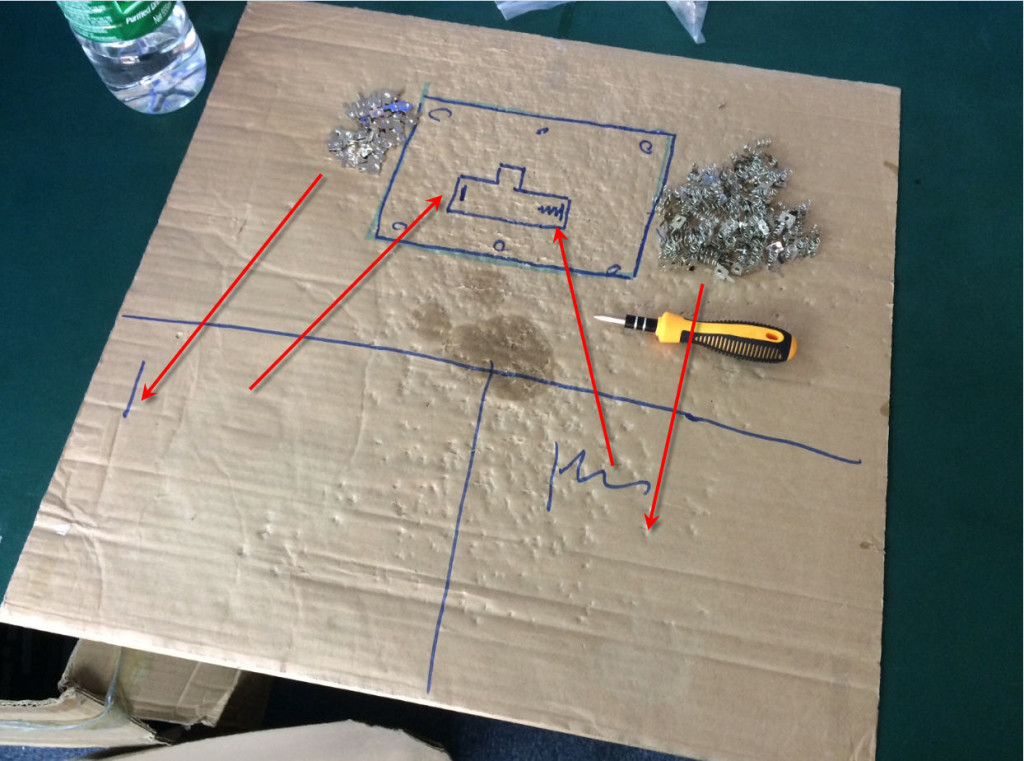
Here, another Poka Yoke jig, I created in few minutes with a bit some foam, a cutter and a pen marker. Here the problem we solve is that the worker has to screw in a certain order to avoid having over pressure on a certain insert. The idea is to screw a bit in a certain order not completely (and to do a second pass) but to have spread pressure evenly. To do so the worker has to be guided, we do easily with number 1,2,3 etc..
You will also notice that the jig has been created and drawn in a certain way making that the placement of the part can not be inverted to avoid mistake.

Because you do this small common sense job, you can avoid a lot of mistakes.
What is fantastic with such small things is you can also improve productivity by going to Gemba:
Imagine a worker having not enough space to be able to be in proper position to solder. A simple armrest to put their arm to solder a wire on a metal part and being at proper level can help to be less painful, more accurate in the gesture, and allow to execute faster.
I hope this article help you with a few tricks which can be implemented at low cost at your Chinese manufacturer to improve the reliability of your Chinese production.
There are plenty of other tricks which cost peanut which can help you to make your manufacturing activity more reliable.
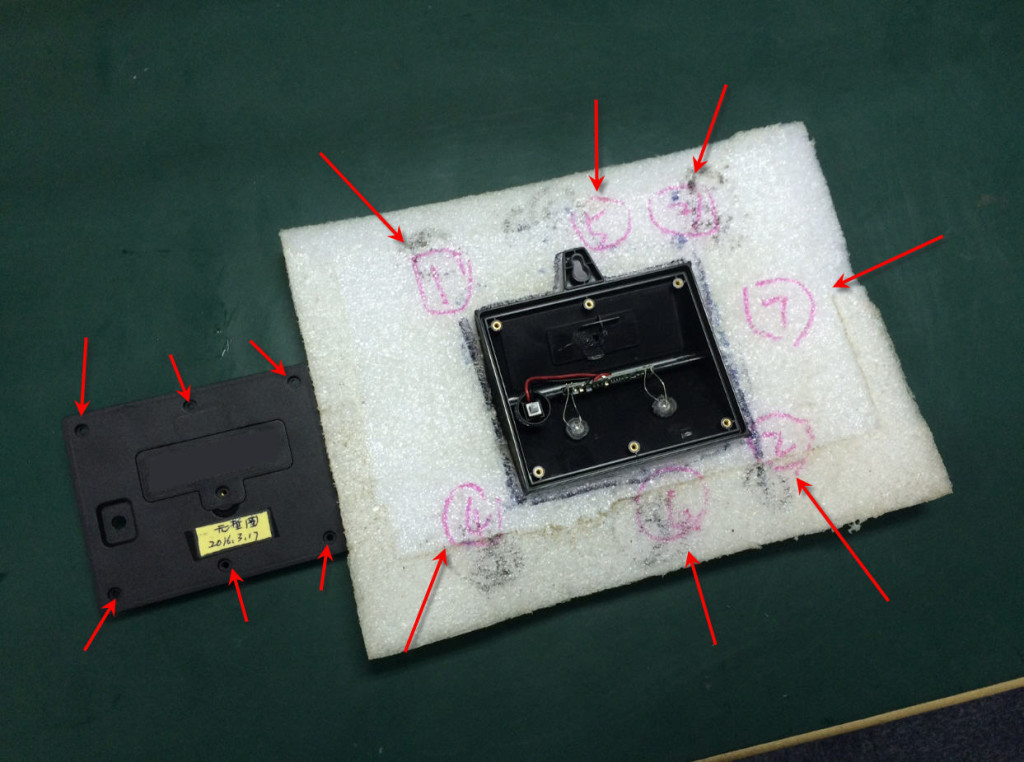
Leave a Reply